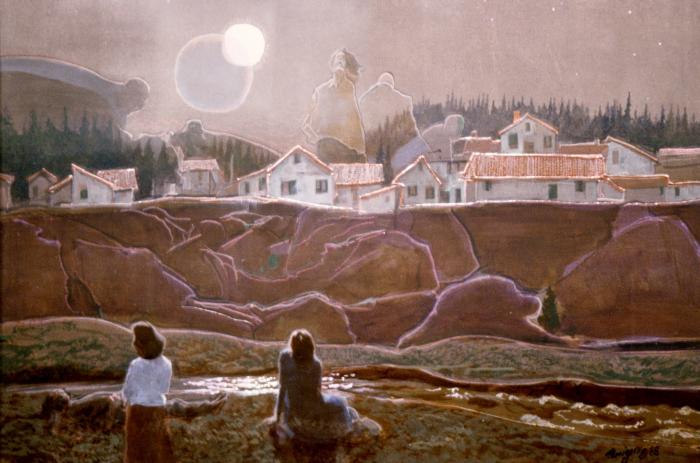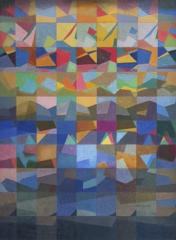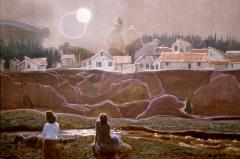If music inspired order, color provided personality. “To me a tube of paint is like a personality,” said Armand. “Color has a disposition” (Merizon, The Relevance of the Arts to Current History, 10-16-76). He went on to explain that color has its own language. Color is conversation. Like people, colors talk to each other. They can be harmonious or acrimonious, pleasing or displeasing. It’s a personal kind of thing. They negotiate with each other. As his friend, Virginia Glew Jaeger noted, “If there’s a little color in one part of a painting it calls for an answer in another part of the painting.” (Dornbush/Zandstra Interview of Virginia Glew-Jaeger, 6-17-04).
Most of us assume color comes along with daylight, but Armand depicts a range of colors in moonlight, colors with serene and mysterious personalities. “Nobody does moonlight,” said Armand. “Why? Well, our modern age just can’t calm down that serenely. You know what I mean. To just go out and sit quietly in the moonlight at night and feel that poetic hum of mystery. You can rationalize it and just say, ‘Oh well, that’s just up there reflecting from the sun and we’ve already had a couple men up there walking around with a golf club or something like that.’ Well, it doesn’t wipe out the poetic mystery for me at all to see moonlight. I love it. I’ve always loved it” (Dornbush/Zandstra Interview, 6-14-04).
I love moonlight. To me it is spiritual. It makes you wonder. But, you see, moonlight in this frivolous age we live in, everything is lit up by electricity and everything' in a hurry. Everything's noisy. Moonlight demands silence. It's conducive to contemplation. It's mysterious and it's uniting. It's intense, intensely harmonious. I have looked at scenes in the daytime that I would never take a second look at. I go there at night and it's all united, harmonized.






